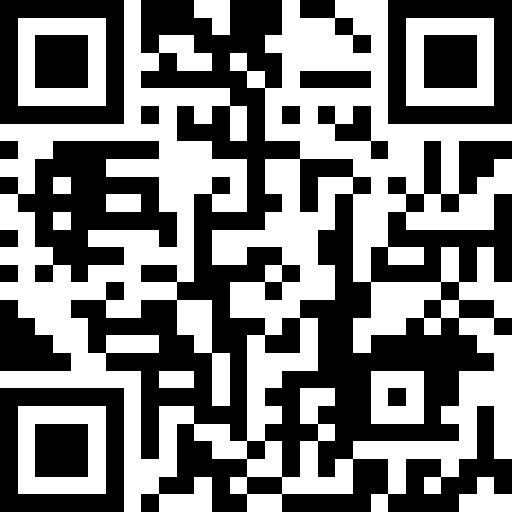Title Page
-
Audit date :
-
Audit reference :
-
Auditor :
-
Auditee :
Mandatory Audit Questions
-
Are procedures being audited meeting the requirements of the where applicable e.g., ISO 9001:2015 and customer-specific codes of practise?
-
Are documents accessible and readily available on the master register?
-
Are documents in use the correct revisions?
-
Have the relevant staff been trained on these documents?
-
Are training records up-to-date with the current documents?
-
Previous Audit Reviewed?
-
Any NC Raised in Previous Audit Closed?
Audit Specific Questions
-
Has it been determined what needs to be monitored and measured from both internal and external sources? e.g. Customer satisfaction and perception, Product conformance; Process performance; Product and process characteristics; Trends in products and processes; Opportunities for preventive action; Suppliers and subcontractors
-
Evidence :
-
Have methods for monitoring, measurement, analysis, and evaluation been made?
-
Evidence :
-
What will be monitored, measured, analysed, and evaluated?
-
Evidence :
-
Where will the monitoring, measurement, analysis, and evaluation take place?
-
Evidence :
-
Are documents retained as evidence of the performance of the quality management system
-
Evidence :
-
Which meetings or processes will perform these tasks?
-
Evidence :
-
Who will be involved?
-
Evidence :
-
When will the monitoring and measurement be performed?
-
Evidence :
-
When will results be analysed and evaluated?
-
Evidence :
-
Have the performance and effectiveness of the QMS been evaluated?
-
Evidence :
-
How effective is the QMS?
-
Evidence :
-
How effective is the planning?
-
Evidence :
-
Is there a need for improvements to the QMS?
-
Evidence :
-
Is there a customer complaints procedure?
-
Evidence :
-
Does the procedure defined responsibilities for logging and tracking complaints, clearing technical issues, determining problem causes and actions to address them
-
Evidence :
-
Are records available to show your organization has implemented a consistent and systematic approach to dealing with customer feedback
-
Evidence :
-
Has the organisation developed processes for obtaining information on customer perception & are records available
-
Evidence :
-
Are records available indicting the organization has analysed and evaluated customer data
-
Evidence :
-
Is the customer data reviewed for trends and is analysis made available to relevant staff?
-
Evidence :
-
Are process (method, techniques, format, etc.) in place to identify what analysis is required?
-
Evidence :
-
Do the processes in place include quality records, monitoring and measuring results, process performance results, objectives, internal audit findings, customer surveys and feedback, 2nd or 3rd-party audit results, competitor and benchmarking information, product test results, complaints, supplier performance information etc
-
Evidence :
-
Area results recorded & analyze?
-
Evidence :
-
How does the organisation ensure analysis is valid?
-
Evidence :
-
Is there an audit schedule establish that cover all requirements of the ISO9001 standards & customer specific requirements where applicable?
-
Evidence :
-
Is the audit schedule based on risk, importance of the processes or from results of previous audits?
-
Evidence :
-
How are audits are planned?
-
Evidence :
-
Is there a procedure identifying the auditing process
-
Evidence :
-
What are the requirements of formal reporting?
-
Evidence :
-
Is auditing criteria used as a reference against which conformity is determined
-
Evidence :
-
Is it documented who maintains the audit schedule?
-
Evidence :
-
Does the schedule identify internal auditors?
-
Evidence :
-
Are internal auditors trained?
-
Evidence :
-
Do the audit results confirm conformity & non-conformity?
-
Evidence :
-
Are supporting audit materials and notes retained?
-
Evidence :
-
Does the audit check the status of any outstanding issues since the last audit
-
Evidence :
-
Does the audit identify the need for corrective or improvement measures
-
Evidence :
-
Is the audit report signed by the lead auditor and the auditee?
-
Evidence :
-
Are actions taken relating to the identified causes?
-
Evidence :
-
Have all actions been completed?
-
Evidence :
-
Is there evidence that the corrective actions are verified & the nonconformity has been removed or reduced to an acceptable level?
-
Evidence :
-
Are result of internal audit analysis & results of internal audits evaluated
-
Evidence :
-
Are results communicated to top management
-
Evidence :
-
Is the effectiveness of the audit programme reviewed as a part of management review?
-
Evidence :
-
Does the audit programme cover processes that can impact on customer satisfaction
-
Evidence :
-
Is process auditing criteria used as a reference against which conformity is determined
-
Evidence :
-
Are process audits sufficient in regards to frequency e.g., newly implemented or recently modified process audited more frequently
-
Evidence :
-
Are all processes formally audited at least once during a 2-year audit cycle?
-
Evidence :
-
Do process audit identify opportunities for improvement and possible corrective actions
-
Evidence :
-
Does the company verify that corrective actions taken in process audits are completed?
-
Evidence :
-
Is there a process audit schedule in place with audits conducted at planned intervals
-
Evidence :
-
Do process auditing drive continuous improvement
-
Evidence :
-
Has the frequency or intervals of the top management’s formal review been defined.
-
Evidence :
-
Does the management review address the possible need for changes to policy, objectives, targets, and other elements of the QMS?
-
Evidence :
-
Is the management review chaired by a member of top management
-
Evidence :
-
Are records of the management review available
-
Evidence :
-
Does management review include the following [at a minimum]?• the status of actions from previous management reviews;<br>• changes in external and internal issues that are relevant to the quality management system;<br>• customer satisfaction and feedback from relevant interested parties;<br>• the extent to which quality objectives have been met;<br>• process performance and conformity of products and services;<br>• nonconformities and corrective actions;<br>• monitoring and measurement results;<br>• audit results<br>• the performance of external providers;<br>• the adequacy of resources;<br>• Risk & opportunities <br>• opportunities for improvement<br>
-
Evidence :
-
Are management meetings occurring at the frequency defined
-
Evidence :
-
Based on the data presented, has the organisation define changes that may be required to the management system or your processes
-
Evidence :
-
Are results and action items from the management review documented, communicated to affected individuals & and tracked to completion
-
Evidence :
-
Does the site utilise performance metrics
-
Evidence :
-
Have targets for performance metrics been identified
-
Evidence :
-
Is it defined how performance metrics are monitored
-
Evidence :
-
Are performance metrics driving the expected outcome
-
Evidence :
-
Where performance metrics indicate underperformance is action take to address
-
Evidence :
Opportunity For Improvement
-
Number of OFI raised :
-
Details
-
Have the OFI details been added to HubSpot
Non-conformance
-
Number of Non-conformances raised :
-
Details
-
Have the Non-conformance details been added to HubSpot













